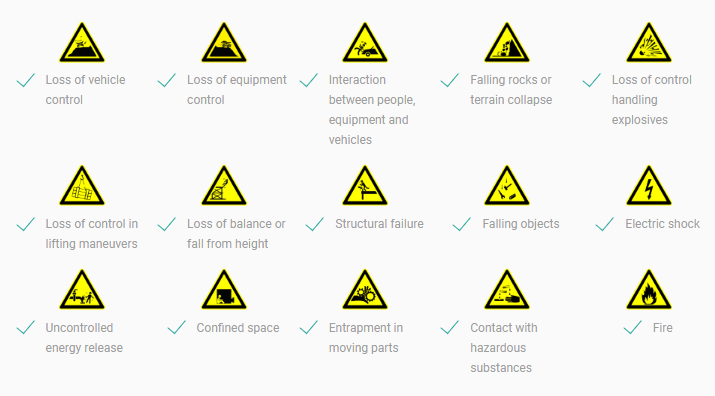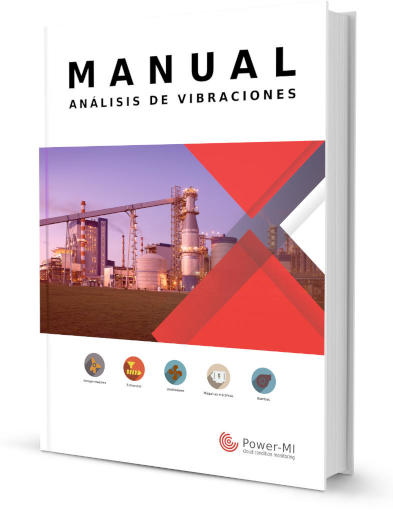The execution of a visual inspection entails the exposure of the inspector to workplace hazards in the place where the asset is operating. To mitigate these risks, it is necessary to inform the inspector of these risks through an industrial safety assessment that identifies the risks at the inspection site.
The most common workplace hazards an inspector is exposed to are:
- Loss of control of the vehicle.
- Loss of control of the team.
- Interaction between people, equipment and vehicles.
- Rockfall or ground fault.
- Loss of control in handling explosives.
- Loss of control in lifting maneuvers.
- Loss of balance or fall from height.
- Structural failure
- Falling objects.
- Contact with electrical energy.
- Uncontrolled release of energy.
- Confined space.
- Entrapment with moving parts.
- Contact with dangerous substances.
- Fire (explosive atmosphere).

The identification of workplace risks or hazards in the area where a visual inspection is to be carried out must be in accordance with a workplace risk prevention policy of the company that owns the assets. When designing visual inspections, it should be done in coordination with the department or person in charge of said prevention. Likewise, inspectors should be trained in the prevention, provided with individual protection equipment, and made periodic medical reviews.
Once the inspectors are in a workplace risk prevention plan, it makes sense to make them aware of the risks to which they are exposed during each inspection. A well-managed visual inspection plan remembers the risks before every field inspection.

 cloud_download
cloud_download